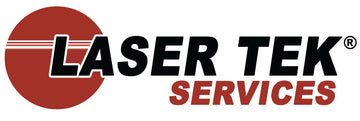With all the concern about the world’s dwindling resources, conservation preoccupies most think tanks and policy initiators worldwide. In the United States, all the talk about conservation is substantiated through the mandate given to the Environmental Protection Agency (EPA) and Department of Energy (DOE) to come up with initiatives that would reduce the impact of operating appliances and equipment to the environment. Thus, in 1992 the Energy Star program was launched as a channel for businesses and consumers to save, conserve, and help the environment. Today, the initiative has produced Energy Star qualified appliances, home and office equipment, as well as buildings.
What can an Energy Star qualified product contribute to conservation efforts and the upkeep of the environment? The program entices all manufacturers to (a) reduce energy consumption on products through improved technology and (b) promote energy efficient practices among consumers. At the onset, computers and monitors took the lead but other electronic items followed such as dryers, washing machines, printers, and audio-video equipment reaching over 60 commercial and residential products. With everybody else involved, the Energy Star program reported in 2008 how it has helped curb pollution (greenhouse gases) equivalent to gas emissions of around 30 million cars while generating energy savings of a little less than $20 billion.
How does an Energy Star qualified product work? The energy efficiency of an Energy Star product is best exemplified in the computer and printer tandem because both machines need be turned on to process information. However, the work of the printer is intermittent and stays idle most of the time. And if the printer used is a laser printer, more energy is expended. Thus, for a laser printer to qualify for an Energy Star rating, the entire unit must shut-off during idle moments and spring back to life when needed. Through advances made in technology, the Canon Image class MF8050cn program-qualified laser printer, for instance, now uses full energy only when printing (900w) and switches directly to energy saver mode that consumes only 3w during idle moments.
Do Energy Star qualified products perform better? In terms of performance, no marked difference is experienced, but in energy consumption the reduction is awesome! Again, energy use will depend on how long the equipment has been turned on. In laser printing, non stop printing for 9-hours (Canon MF8050cn) will use 8.1Kw. But if it is kept idle for the same duration, the printer will only need 0.027Kw in this mode. Compare this to a similar printer that is not Energy Star classified. The energy consumption will be uniform all throughout (8.1Kw) because the use of energy does not vary even when the printer is not in operation.
Next time you need an office or home equipment, always look for the star (Energy Star) on the packaging, because this guarantees energy efficiency €“ translated into 10% to 20% savings in energy bills.





